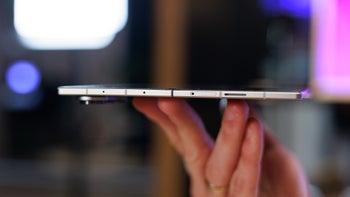This $160 accessory brings eye tracking to Meta Quest 3 and Quest 2

A really cool feature in some VR headsets is eye tracking. Though the Meta Quest Pro had eye tracking, neither the Quest 3 or Quest 2 came with the feature. Inseye, a company making camera-free eye tracking solutions for XR (Extended Reality) devices, is bringing eye tracking to Quest for just $160.
The add-on Inseye is working on, named Lumi, will cut costs by relying on cheaper photosensors instead of infrared cameras. Though this method will make the eye tracking slightly less accurate than competitors, it will do a good enough job for most use cases.
For example, foveated rendering, where areas outside of a person’s central vision are rendered in lower resolution to improve performance. Most other basic eye tracking features will also work. It’s only certain acts that require a lot of accuracy that might face some trouble working correctly.


Bringing the Pro to Meta Quest 3 with Inseye Lumi.
The Inseye Lumi also boasts a much faster refresh rate and latency compared to conventional camera-based eye tracking. 1000 Hz versus 120 Hz and less than a millisecond versus tens of milliseconds respectively.
Those numbers are not indicative of all camera-based eye tracking solutions, of course. But this should help applications track a user’s eyes much faster and adjust certain aspects accordingly.
Eye tracking, in addition to improving performance with foveated rendering, can also serve other purposes. You can navigate menus in VR much more intuitively and even have your avatar in a social hub mimic your eye movement.
Another modern VR headset that supports eye tracking is the PSVR2. However, the PSVR2 will not support eye tracking and other features if you use the PSVR2 PC adapter to play PC VR games.
That makes the Inseye Lumi a very appealing accessory, in my opinion. Bringing eye tracking to the excellent Meta Quest 3 for just $160? Sign me up!
Eye tracking, in addition to improving performance with foveated rendering, can also serve other purposes. You can navigate menus in VR much more intuitively and even have your avatar in a social hub mimic your eye movement.
Another modern VR headset that supports eye tracking is the PSVR2. However, the PSVR2 will not support eye tracking and other features if you use the PSVR2 PC adapter to play PC VR games.
That makes the Inseye Lumi a very appealing accessory, in my opinion. Bringing eye tracking to the excellent Meta Quest 3 for just $160? Sign me up!
Follow us on Google News














Things that are NOT allowed:
To help keep our community safe and free from spam, we apply temporary limits to newly created accounts: